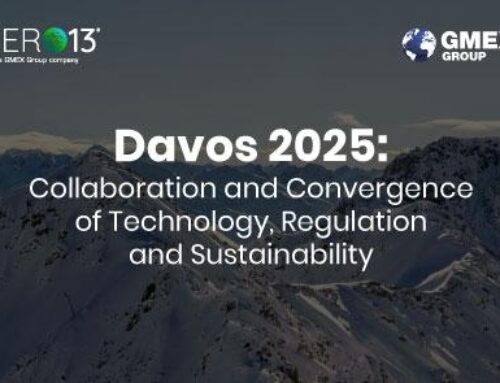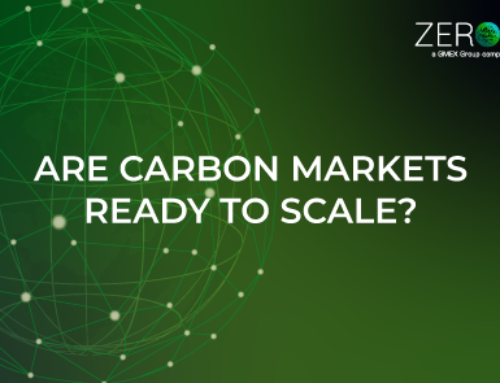By Hirander Misra, Chairman of GMEX Group
The current global pandemic has changed our mindset and habits, as we are forced to revaluate the current ways we do things by thinking further outside the box. Over the last 12-18 months there has been a complete contrast of fortunes in the capital markets technology sector, with some firms flourishing, some struggling to survive, and others having to reinvent themselves to do so. Here at GMEX Group it has presented a substantial opportunity for innovation, which continues to accelerate on the back of the momentum already built.
One such opportunity centres on digital market infrastructure-enabled digital assets which, despite near-term market-driven volatility, will continue to experience increasing demand for solutions and services from institutional capital markets firms.
Market Infrastructure Evolution
GMEX Group started as a FinTech company over 9 years ago and focused on supplying technology to traditional exchanges and post trade operators based on a partnership-driven approach. Over the last few years, as a growth-stage company, we have focused on both digital market infrastructure solutions (including issuance, exchange trading, clearing, settlement and digital custody for digital assets), as well as continuing with traditional market infrastructure enablement. Our hybrid market infrastructure approach has enabled us to deliver technologically advanced, institutional grade, future-proofed solutions that take advantage of the inherently positive characteristics of both traditional and digital market infrastructure.
In today’s environment, exchange matching engines, digital trading platforms and post trade systems need to embrace a hybrid ecosystem approach. Bridging the gap between traditional and digital capital markets, whilst effectively mapping to evolving regulatory frameworks, is essential. This requires an approach which encompasses traditional and digital assets, digital currencies, security tokens and digital securitisation of traditional assets including derivatives and commodities. The increasing regulatory requirements for digital asset infrastructure and the resultant demand for solutions that are fit for purpose has played into our core strengths.
We’ve worked to provide a complete hybrid market infrastructure product suite called GMEX Fusion, which is ideally suited for regulated exchanges, trading venues, custodians and banks focused on both traditional and digital assets of all kinds. Our solution set has been designed to support the latest technology and business challenges that are impacting the way traditional exchanges are looking to operate as they look to embrace digital transformation. GMEX Fusion also addresses the demands from the cryptocurrency exchanges, digital asset trading venues, Non Fungible Token (NFT) marketplaces and emerging markets looking to start-up or enhance their exchange ecosystem and support digital assets. GMEX is working with many of these entities across multiple jurisdictions as our footprint is very much global, with clients and partners all over the world.
Exchange 4.0
The Fourth Industrial Revolution (4IR) is driving technological innovation in many spheres, and with it comes the need to move from analogue to digital – and embrace Exchange 4.0. The industry-changing network will see exchanges, trading venues, post trade operators, custodians, and other services interconnect more seamlessly, with the ability to swap services and assets across jurisdictions and across different types of users. This transformational solution will necessitate digital exchange trading systems, order matching engines and post trade platforms to transition from the legacy solutions that have been around for decades.
We are now moving past the second and third generation of blockchain in financial services towards Exchange 4.0 at an accelerated pace.
As an industry, we’re in a state of flux which has merely been exacerbated by the crisis. If we look at FinTech firms now, I would argue it’s the most exciting time ever because so many new technologies are emerging. With blockchain on the one hand, and AI, Internet of Things (IoT) and quantum computing on the other. From being nascent, many of these are now starting to grow as well as integrate. With all this technology around, the opportunity for innovation is immense. But that’s counter-balanced by the inertia of existing legacy platforms, processes and mindsets.
We know how the smartphone revolutionised the way we communicate, online and in every other fashion. Even 10 years ago, we couldn’t have envisioned where we are now and the extent to which it’s developed.
We are now in the same place in financial markets. We don’t necessarily see it and despite the innovation there are many silos which don’t talk to each other effectively. There is strong client demand for the full spectrum of digital and hybrid services. However interoperability and time to market remain a challenge, with traditional and multiple types of blockchain-enabled digital market infrastructure being severely fragmented.
The team at GMEX group firmly believe that digital market infrastructure and related services need to integrate with existing market infrastructure and technologies to foster interoperability. By doing so there is an opportunity to interconnect the whole capital markets value chain of participants across international nodes (jurisdictions), to more easily trade, clear and settle traditional assets and digital assets and eradicate the age-old exchange silos.
The immense opportunities
As unfortunate as the current crisis is, it will end and immense opportunities will follow once normality resumes. There is expected to be exponential growth in digital assets over the next five years, with a continued uptick in institutional demand. This is not only a huge opportunity for FinTech firms, but also a big opportunity for financial markets firms and those that provide financial services.
To GMEX, this presents an opportunity where the right answer isn’t the traditional status quo and it isn’t the decentralised Wild West. The right answer is somewhere in between, and that presents an opportunity to create new products, new asset classes and new revenue streams.
The ability to harness hybrid market infrastructure will be essential in the capital markets sector, irrespective of whether the underlying asset class is traditional or digital. And to achieve the winning position, innovation now is key!



